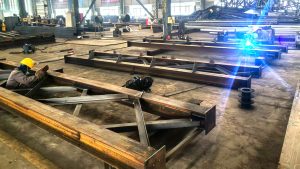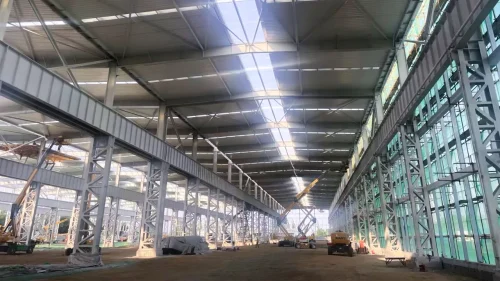Steel Lattice Column
A steel lattice column is a vertical load-bearing structure made from multiple slender steel members (often angles, channels, or tubular sections) arranged in a lattice or truss-like pattern. This open-web configuration reduces weight while maintaining high strength, making it a cost-efficient alternative to solid-section columns for certain applications.
Structural Composition
- Built from three or four main vertical chords connected with diagonal bracing.
- Members are typically hot-rolled steel angles or tubular sections.
- Connections made by bolting, riveting, or welding.
Design Benefits
- Lightweight: Less steel volume compared to solid sections.
- High Load Efficiency: Transfers loads through triangulated bracing.
- Wind Resistance: Open lattice reduces wind drag on tall structures.
- Ease of Transport: Can be prefabricated in sections for assembly on-site.
Material Options
- Common grades: Q235B, Q355B, ASTM A36, S275JR, S355JR.
- Galvanized or painted for corrosion protection.
Surface Treatments
- Hot-dip galvanizing for outdoor durability.
- Industrial epoxy or polyurethane coatings for marine/coastal use.
Applications
- Transmission Towers – Power line support columns.
- Communication Masts – Radio, TV, and mobile network towers.
- Industrial Buildings – Long-span roof supports in factories.
- Bridges – Lattice piers for railway or pedestrian bridges.
- Cranes – Column supports for gantry cranes and tower cranes.
Advantages
- Material Savings: Lower steel consumption than equivalent solid sections.
- High Strength-to-Weight Ratio: Ideal for tall and long-span structures.
- Adaptability: Can be designed for varying loads and environmental conditions.
- Reduced Wind Load: Open structure minimizes aerodynamic resistance.



